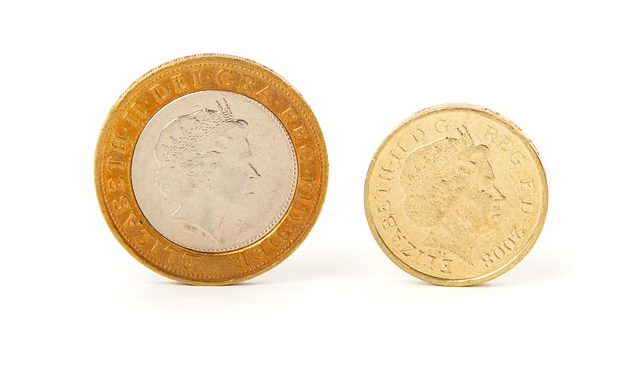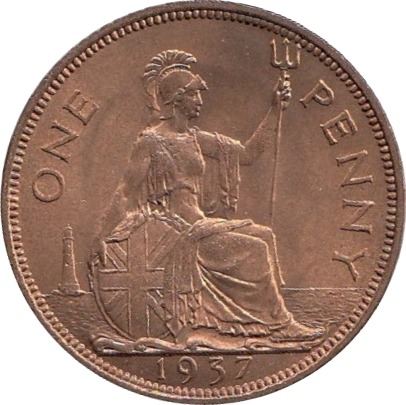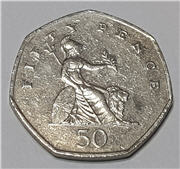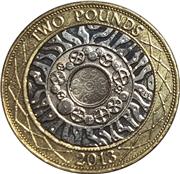
Metals used in Modern British Coins
We handle coins on virtually a daily basis. We talk about their worth, and collectors like us discuss their designs in great detail. But unless the coin is some precious metal we rarely investigate what metals make up the coin and why they were used. So I thought I would.
Can we use any metal?
 Actually, no. We have to remember that coins are the physical and practical manifestation of money. We handle them, store them and exchange them on a very regular basis. So coins must have some fundamental properties
Actually, no. We have to remember that coins are the physical and practical manifestation of money. We handle them, store them and exchange them on a very regular basis. So coins must have some fundamental properties
Coins must be safe to touch.
We can’t have radioactive coins or made from material that would be toxic to humans.
Coins need to be durable.
We would like coins to have a long life of 30 years of more. The metal used must be fairly hard wearing and not decompose due to the constant handling of humans or from the weather. Coins that would rust quickly are no use to us. So the metal needs to have high wear resistance and anti-corrosive properties.
Coins need to be easy to manufacture.
We need to have tens of millions (or more) of coins in circulation. We must be able to use efficient processes to manufacture this number. We use stamping and pressing so the metal need to be soft enough to use dies to do this.
The value of the metal should be less than the face value of the coin.
If we made pennies using gold they would disappear to the smelters as fast as they were minted and the country would be bankrupt! On saying that some low-value coins do cost more to mint than the face value of the coin.
It’s not always obvious as you may think, as conditions change with time. Pre-1992 British pennies were 97% copper with 2.5% Zinc plus 0.5% tin, an alloy known as Bronze. Twenty years later this meant there was 1.5 pence of copper in each penny.
So the range of metals suitable is limited and in most cases alloys of one or more metals are used.
Coin metals have changed over the years
To prevent the penny problem described above, from 1992 the British penny is actually copper-plated steel, consisting of 94% steel and only 6% copper.

America had a similar problem. Cents were made from copper (except during the War years when copper became scarce) but nowadays cents are copper plated zinc.
Silver was a popular material for circulating coins from very early days. In Britain before 1921 silver coins (like shillings, florins, halfcrowns) were 92.5% pure silver (sterling silver, the rest usually copper). This became 50% silver and by 1947 there was no actual silver in “silver” coins.
Cupronickel (75% copper, 25% nickel) became the popular choice to replace silver. Cupronickel is shiny like silver and highly resistant to corrosion in seawater. However, by 2011 the copper price was sufficient to move the lower denomination silver coins (5p, 10p) to use nickel-plated steel (94% steel, 6% nickel).
 50 pence pieces are still Cupronickel (75% copper, 25% nickel), as are £5 coins (which replaced the 25p crown in 1990). For some reason, 20 pence coins are called Cupronickel but have a different ratio of 84% copper, 16% nickel.
50 pence pieces are still Cupronickel (75% copper, 25% nickel), as are £5 coins (which replaced the 25p crown in 1990). For some reason, 20 pence coins are called Cupronickel but have a different ratio of 84% copper, 16% nickel.
As coins last much longer than banknotes, the One-Pound note was replaced with a one-pound circular coin introduced in 1984. To give it a gold-like colour the alloy was 70% copper, 24.5% zinc and 5.5% nickel.
Bi-metallic Coins
Bi-metallic Coins have been around for some time but not in the UK. There was a tin farthing with a copper plug in 1692 but for most purposes the £2 coin was a first.
 The Two Pound (£2) coin is a bimetallic coin introduced in 1998 (although the first are dated 1997). The outer circle is Nickel-Brass (76% Copper, 20% Zinc, 4% Nickel) and the inner ring is Cupronickel (75% copper, 25% nickel).
The Two Pound (£2) coin is a bimetallic coin introduced in 1998 (although the first are dated 1997). The outer circle is Nickel-Brass (76% Copper, 20% Zinc, 4% Nickel) and the inner ring is Cupronickel (75% copper, 25% nickel).
Having different materials for outer and inner circle means that the outer circle can be be harder then the inner circle, giving protection to the coin. It also makes the coin more difficult to duplicate as counterfeiting is an eternal problem with circulating coinage.
Unfortunately, coins are much easier to forge than banknotes. By 2014 it was estimated that 3% of the round pound coins were counterfeit and the Royal Mint redesigned the one-pound into a 12-sided bi-metallic coin with many built-in security features.
The new one-pound coin was launched in 2017. The outer ring is gold coloured nickel-brass (76% Copper, 20% Zinc, and 4% Nickel) and the inner ring is a silver coloured nickel-plated alloy. The Royal Mint struck 300 million of them!
Precious Metal Bullion and Proof Coins
UK gold coins are basically the gold Sovereign and the gold Britannia and their families.
Years ago the sovereign was a working coin that was often handled and as gold is a very soft metal copper was added to make the coin harder and more resistant to wear. The gold sovereign is 22 carat, which is 91.67% gold as in the traditional ratio of 11/12ths gold, 1/12th copper.
These days bullion coins are only lightly handled and proof versions are almost never touched, so the UK has gone with the trend and the gold Britannia is minted in 999.9 gold (99.99%).
Silver Britannia’s are 999 silver.
The Royal Mint also uses Platinum for some coins at 0.9995 standard.
Some Silver coins are gold plated. The Alloy of gold and silver is called Electrum.







